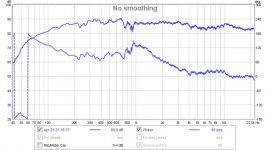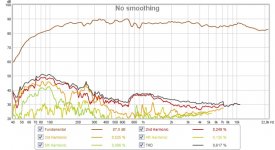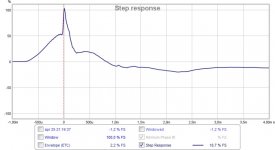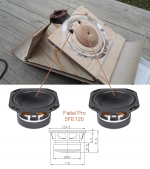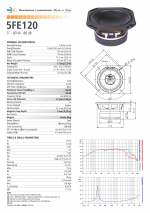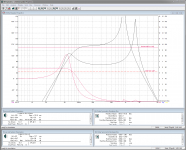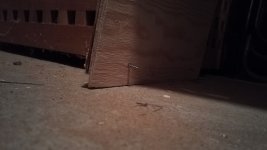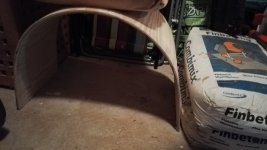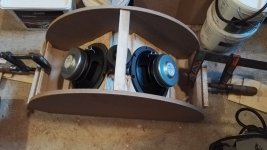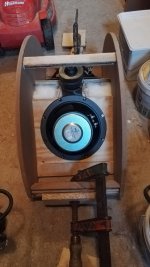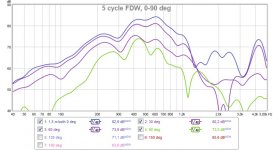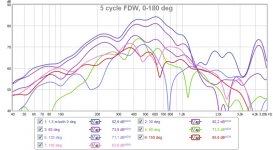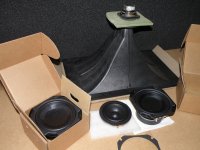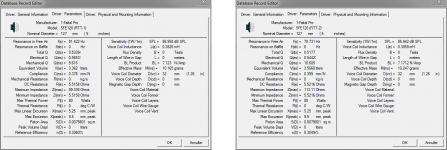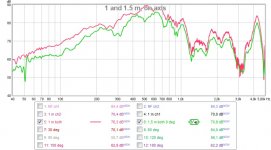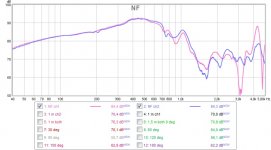Onni,
Cool idea to use LT on a tweeter to get lower xo point! 🙂
This is actually very good. I am surprised it works better without volume filler.
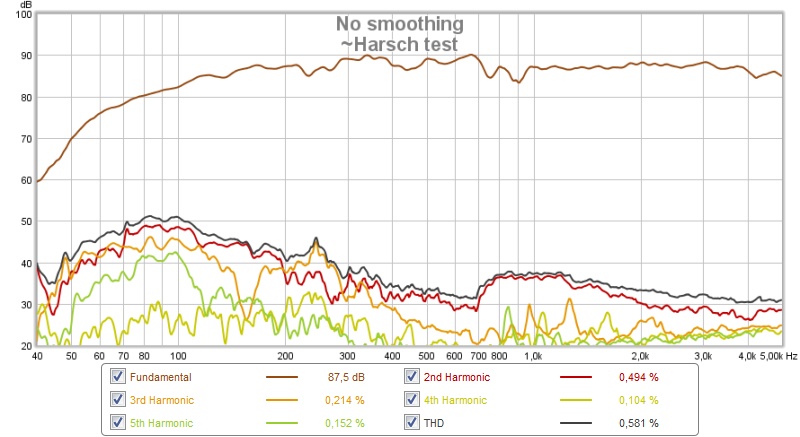
Can you show Step Response? That's the true test of a good Harsch XO.
Cool idea to use LT on a tweeter to get lower xo point! 🙂
This is actually very good. I am surprised it works better without volume filler.

Can you show Step Response? That's the true test of a good Harsch XO.
Last edited:
I don't know; belatedly realizing the tweeter could cross lower reminds me of the story of the fox and the grapes🙂 Unlike the fox, perhaps your mids don't need to reach so high after all.
Thanks! I thought I was clever when I came up with the idea, but it was of course thought out by Linkwitz himself before me 🙂Onni,
Cool idea to use LT on a tweeter to get lower xo point! 🙂
This is actually very good. I am surprised it works better without volume filler.

Can you show Step Response? That's the true test of a good Harsch XO.
There is still some problems with the phase, the woofer seems to be lagging about 75 deg. It was a very quick and dirty XO. Here are the figures from 40 to 22 000 Hz:
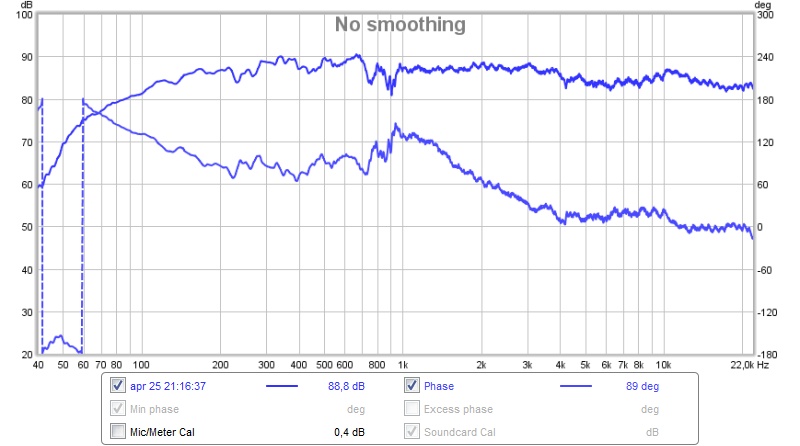

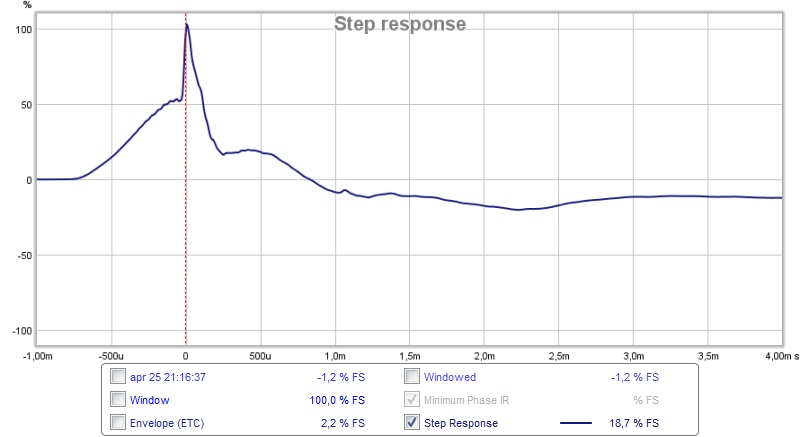
Maybe I shouldn't be calling it Harsch as it's just setting the same level and adjusting delay until dip at XO disappears. The slopes are not at LR24 and Bessel.
/Anton
Attachments
Speculate if two 8 ohms of these serial coupled and then parallel coupled to other set could improve mid situation and also reach the low end 150Hz point and spl onni plan for.
Plan have a pair later myself for some other tests but if onni interested i can order tomorrow and when arrived test one of them on a simple baffle behind a injection port with specs same as onni has and share data at example 5cm distance.
Plan have a pair later myself for some other tests but if onni interested i can order tomorrow and when arrived test one of them on a simple baffle behind a injection port with specs same as onni has and share data at example 5cm distance.
Attachments
I don't know; belatedly realizing the tweeter could cross lower reminds me of the story of the fox and the grapes🙂 Unlike the fox, perhaps your mids don't need to reach so high after all.
That was one of the unexpected benefits of using domes on waveguides. Much to my surprise, you can generally cross them lower because their suspension has more travel than a compression driver. Their 'Q' is also lower, which means that the rolloff isn't as steep.
Thanks! I thought I was clever when I came up with the idea, but it was of course thought out by Linkwitz himself before me 🙂
There is still some problems with the phase, the woofer seems to be lagging about 75 deg. It was a very quick and dirty XO. Here are the figures from 40 to 22 000 Hz:



Maybe I shouldn't be calling it Harsch as it's just setting the same level and adjusting delay until dip at XO disappears. The slopes are not at LR24 and Bessel.
/Anton
The only advice I have for getting a perfect Harsch (or any other textbook xo) is to measure the raw responses and convert to minimum phase FRD files. Use interference method to determine tweeter acoustic offset. The manipulate filters and EQ settings all in simulation program like PCD with textbook BW4 and BES2 overlays. Use EQ and filters and delays per Harsch to match overlays as best as you can. Transfer the filter and EQ settings to miniDSP and it works right the first time with no fiddling or adjustment.
Speculate if two 8 ohms of these serial coupled and then parallel coupled to other set could improve mid situation and also reach the low end 150Hz point and spl onni plan for.
Plan have a pair later myself for some other tests but if onni interested i can order tomorrow and when arrived test one of them on a simple baffle behind a injection port with specs same as onni has and share data at example 5cm distance.
I ended up replacing each of my 8FE200 with two 4FE35s and wired the four of them in series/parallel. I did lose some extension in the process but I was corner loaded and was able to reach down to 200 Hz, which is as far as I needed to go.
I ended up replacing each of my 8FE200 with two 4FE35s and wired the four of them in series/parallel. I did lose some extension in the process but I was corner loaded and was able to reach down to 200 Hz, which is as far as I needed to go.
Nice sounds like you got them right trimmed to application and a good performer, Faital Pro looks like good stuff and look forward myself try Faital for first time. Think onni announced he go for 150Hz extension and seems 5FE120 can do it, has thermal power of 80watt Xmax of 5,25mm and Sd area of 79,8 sq cm, also some say for mid high Qms is superior and these have Qms of 7,4.
Below in a dirty quick sim setup is 8 ohm versions of 4FE35 verse 5FE120 sealed and also 4th order symmetric bandpass box, 4FE35 is feeded 32 watts and 5FE120 have 64 watt.
Attachments
Last edited:
This is actually the driver I plan to use if I can't get the 8FE200 to work.Speculate if two 8 ohms of these serial coupled and then parallel coupled to other set could improve mid situation and also reach the low end 150Hz point and spl onni plan for.
Plan have a pair later myself for some other tests but if onni interested i can order tomorrow and when arrived test one of them on a simple baffle behind a injection port with specs same as onni has and share data at example 5cm distance.
/Anton
Just two pics
I'm making the enclosure now. This is what it looks like so far:


The upload function doesn't seem to work on my phone, so I uploaded to another site.
/Anton
I'm making the enclosure now. This is what it looks like so far:


The upload function doesn't seem to work on my phone, so I uploaded to another site.
/Anton
Very nice work Onni! The design looks wonderful. Love the round-overs on the ends. Will you cover the front with fabric grille cloth or leave open?
Thanks! It will most likely be covered, much cleaner look that way.Very nice work Onni! The design looks wonderful. Love the round-overs on the ends. Will you cover the front with fabric grille cloth or leave open?
Here are a few pics from today's progress:
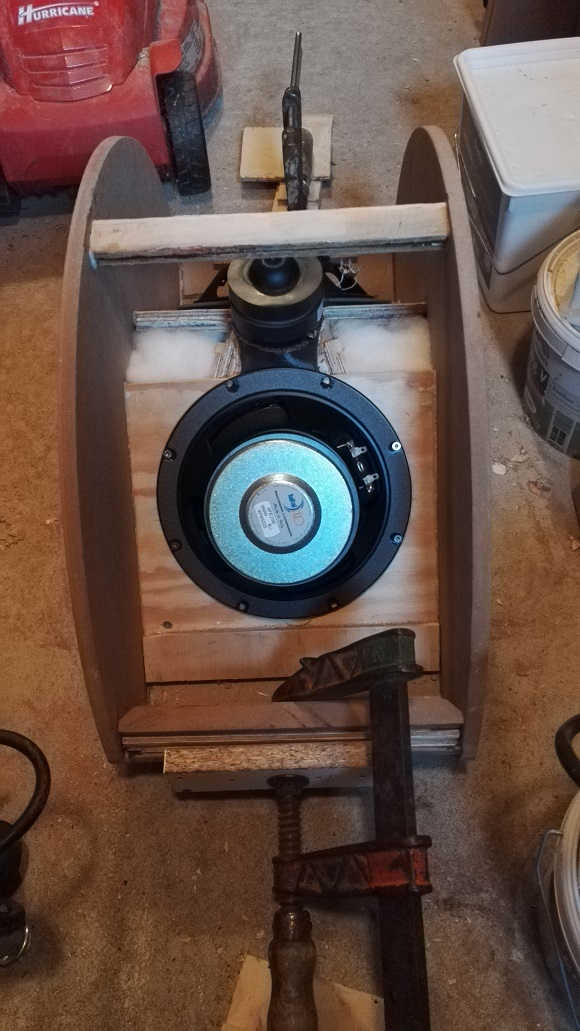

I'm gluing stiffeners for the edge of the cardboard. Will also be used to fasten the back panel.
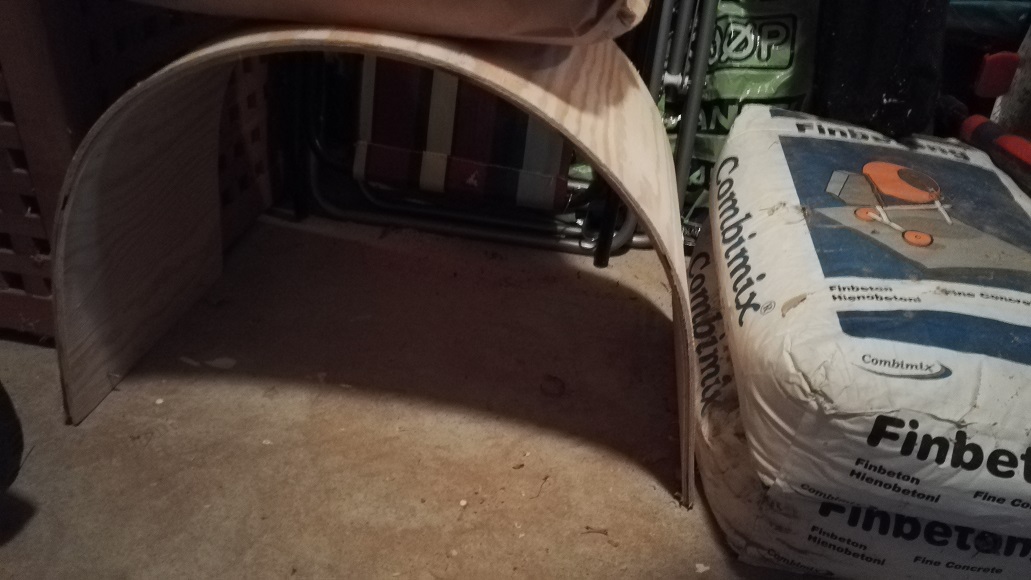
Here I'm testing an idea I had about how to easily glue two (pre-bent) panels together. First I cover one of the panels with glue, then i screw them together at one end. Then I bend them slightly less (about 90° total angle) than final (about 180°) and screw the other end together. After this I bend to the desired shape which forces the surfaces together with some force. This should keep the surfaces in contact while the glue sets. I'm not sure the pressure will be enough though.
Close up of the screw holding the panels together:
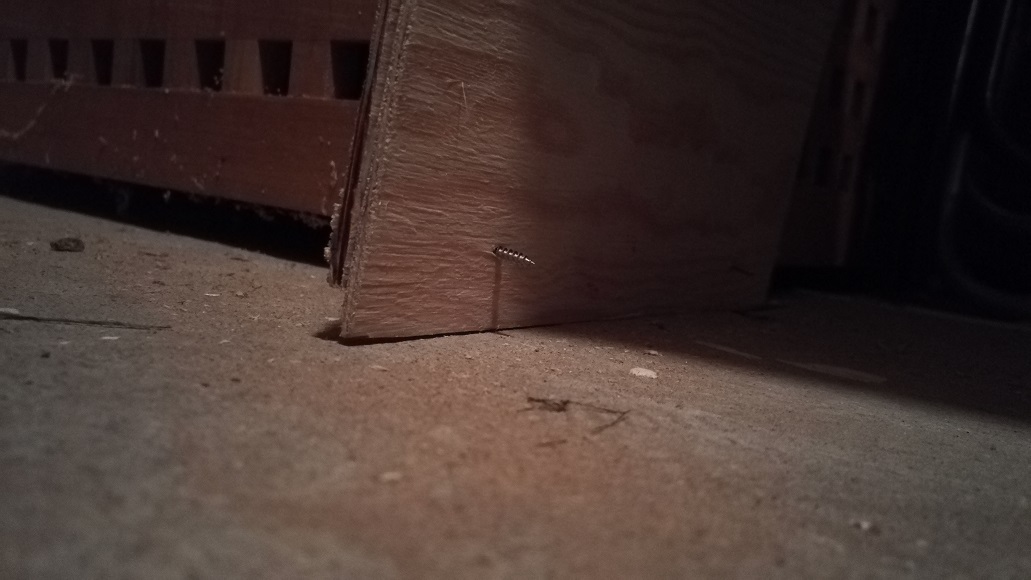
/Anton
Attachments
Last edited:
I have heard that putting the ply in a trashbag with wet towels for 48 hrs gets them nice and soft - then you can bend and screw them down. Once dry they stay curved with less stress and tension.
Looks great though.
Looks great though.
I did approximately that, I wet them and put them in a bent position to dry. So they were pre-bent when I glued them.I have heard that putting the ply in a trashbag with wet towels for 48 hrs gets them nice and soft - then you can bend and screw them down. Once dry they stay curved with less stress and tension.
Looks great though.
/Anton
Polars for woofers
I measured some polars with both woofers attached and with a lot of damping behind them. 1.5 m distance (from top of phase-plug on R2604), 1.3 m from ground. Completely raw (0, 30, 60, 90 deg):
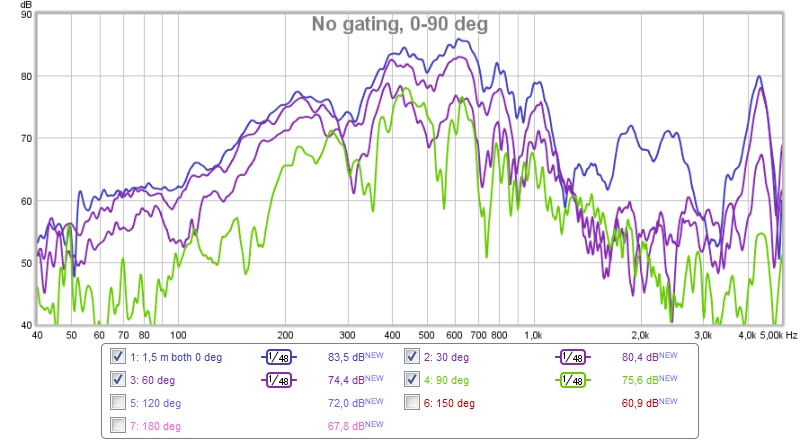
With a 5 cycle FDW (0, 30, 60, 90 deg):
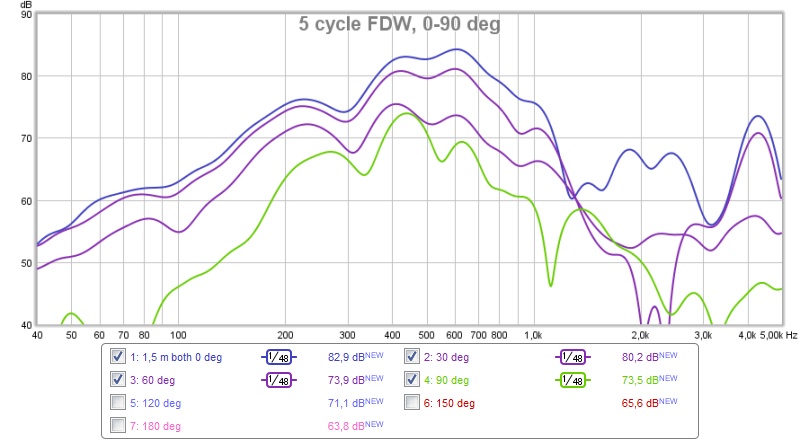
And all the way to 180 deg:
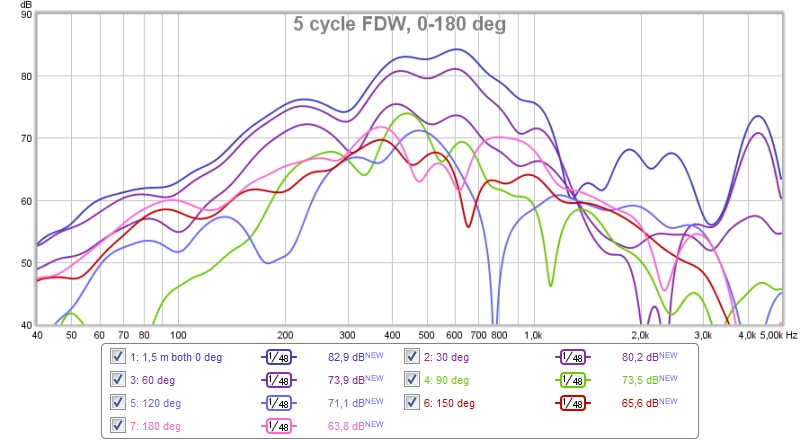
0-90 is not bad at all, albeit a little uneven. I'll experiment with some PEQ and XO later.
/Anton
I measured some polars with both woofers attached and with a lot of damping behind them. 1.5 m distance (from top of phase-plug on R2604), 1.3 m from ground. Completely raw (0, 30, 60, 90 deg):

With a 5 cycle FDW (0, 30, 60, 90 deg):

And all the way to 180 deg:

0-90 is not bad at all, albeit a little uneven. I'll experiment with some PEQ and XO later.
/Anton
Attachments
Is the distance from the bass injection port to the mouth 11 inches long? And is that the source of the 300hz dip? It's unusual because below 500Hz, woofer response from port injections usually pretty uniform for speaker like this. For example look at my bookshelf horn - the polars are uniform below 600Hz - omnidirectional basically.
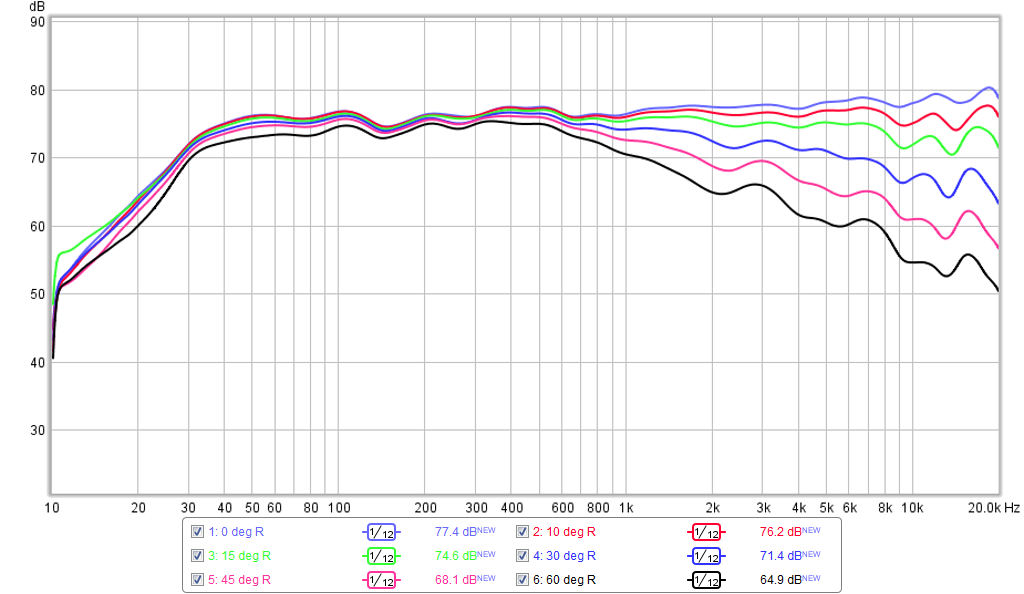
Anyhow, good progress but now comes the debugging phase.

Anyhow, good progress but now comes the debugging phase.
xrk971,
He bravely shoot for controlled directivity very low in frq except for subwoofer : ) previous he shared this link to subject with research http://www.diyaudio.com/forums/multi-way/281789-leaky-supercardioid-mids.html.
onni,
Thanks sharing build progress it looks good, your 8 inchers looks better now but should need any data down the road i just got 2x 5FE120 for trials, so far brand new without break in (relative high fs) had a run with DATS but you welcome request data how they perform behind a bandpass port.
He bravely shoot for controlled directivity very low in frq except for subwoofer : ) previous he shared this link to subject with research http://www.diyaudio.com/forums/multi-way/281789-leaky-supercardioid-mids.html.
onni,
Thanks sharing build progress it looks good, your 8 inchers looks better now but should need any data down the road i just got 2x 5FE120 for trials, so far brand new without break in (relative high fs) had a run with DATS but you welcome request data how they perform behind a bandpass port.
Attachments
The 300 Hz dip seems to be ground reflection. Here is measurement at 1 and 1.5 m:Is the distance from the bass injection port to the mouth 11 inches long? And is that the source of the 300hz dip? It's unusual because below 500Hz, woofer response from port injections usually pretty uniform for speaker like this. For example look at my bookshelf horn - the polars are uniform below 600Hz - omnidirectional basically.

Anyhow, good progress but now comes the debugging phase.
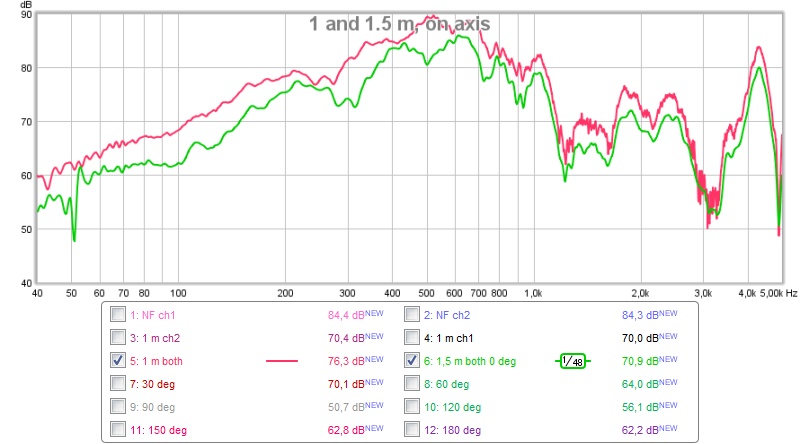
Closer=larger difference between direct and reflected sound=first dip at lower freq.
Maybe I should try to raise the speaker even higher for the polar measurements to reduce influence of ground reflection. How did you do it? The woofer setups are slightly different (more routing done on one and slightly larger BP-holes). This is the difference between NF-measurements:
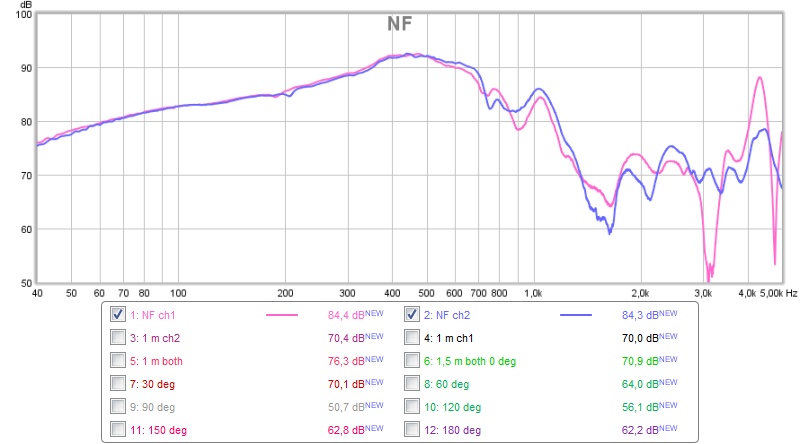
That's great!xrk971,
He bravely shoot for controlled directivity very low in frq except for subwoofer : ) previous he shared this link to subject with research http://www.diyaudio.com/forums/multi-way/281789-leaky-supercardioid-mids.html.
onni,
Thanks sharing build progress it looks good, your 8 inchers looks better now but should need any data down the road i just got 2x 5FE120 for trials, so far brand new without break in (relative high fs) had a run with DATS but you welcome request data how they perform behind a bandpass port.
/Anton
Attachments
I have my speakers on a stool so height is about 1m. I place mic at 0.5m and use FDW gate to ensure no ground or ceiling reflection is shown. I can't get much farther away without ground reflection dip.
- Home
- Loudspeakers
- Multi-Way
- Synergy attempt without compression driver
